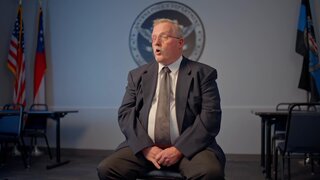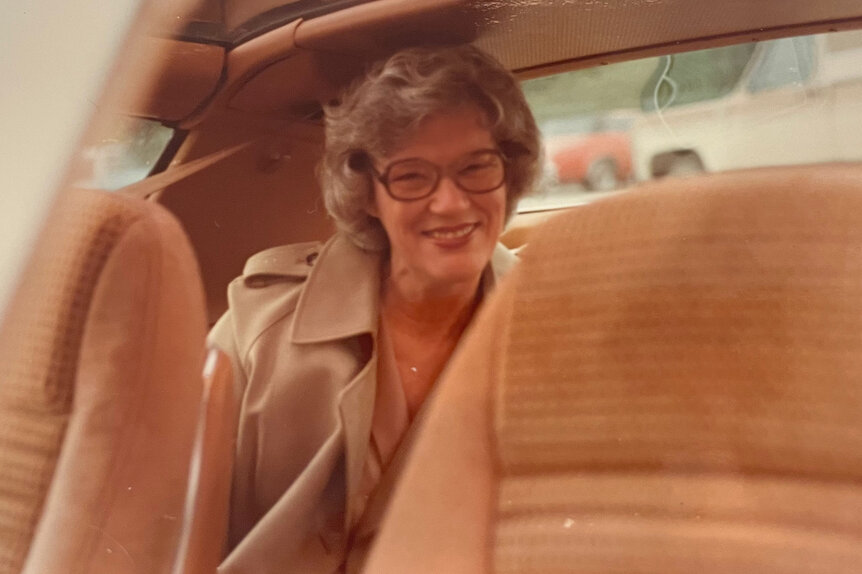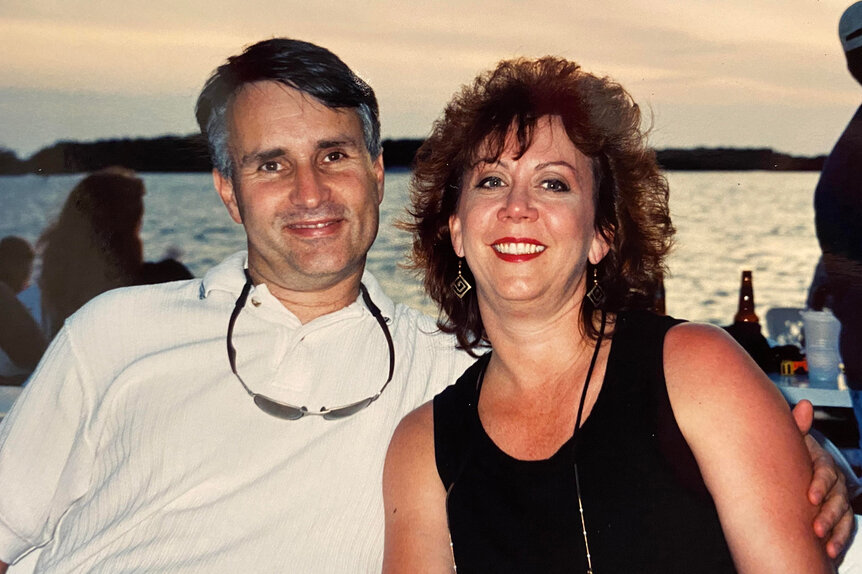Create a free profile to get unlimited access to exclusive videos, breaking news, sweepstakes, and more!
She ‘Signed Her Death Warrant’: Atlanta Husband Seeking Insurance Payouts Killed 2 Wives
When questioned about his wife Kasi Peek's murder, John Peek told investigators, “As a matter of fact, I was the primary suspect in my last wife’s murder. How about that.”
In the mid-1990s, the quiet suburb of Marietta, Georgia had become the home of Lockheed Martin, along with many of its well-educated, well-paid employees in the aerospace and defense industry.
Carol Marlin, 46, a program planner, was among them. On the night of June 13, 1996, her common-law husband, John Peek, who worked in IT at Lockheed, called police to report that Marlin was missing. She’d gone out to dinner with her friend and former coworker Margaret Ginn, 64, and never came home.
“Missing persons cases aren’t unusual with police departments,” Eddie Herman, a retired detective sergeant with the Cobb County PD told “The Real Murders of Atlanta,” airing Sundays at 8/7c on Oxygen. In many instances, the person returns. But not always.
Herman went to John's home and gathered information, learning that Marlin drove a blue Camry. In the morning, he obtained Ginn’s address from Lockheed, drove to the site, and found Marlin's car parked there. “I didn’t have a good feeling,” Herman told producers.
When police arrived at the residence, no one answered. After obtaining permission from one of Ginn's children, authorities kicked in the door. The body of a woman, identified as Marlin, was face down on the dining room floor. Ginn also deceased, was in the bedroom.
Both victims had been bludgeoned in the head. Marlin's beating was especially savage, suggesting to police that the murder was personal. Several things also stood out to investigators, including that the killer took the time to lock the door and that there was a document in a strange place. torn Lockheed invoice had been inserted into Marlin's hand. The name Barry Webb was on the paper.
As investigators considered the document, John arrived at the crime scene. After informing him of his wife’s death, police brought him to the station. They want to learn more about the dynamic of Marlin's relationship with John who worked in IT at Lockheed. John insisted their relationship fine.
When Herman asked John to account for his whereabouts the night of the murder, he said he’d grabbed a meal from a fast food chain and went home. Asked if there was anyone who wanted to harm his wife, John recalled a vaguely threatening letter that had been sent out anonymously a week before the murders to select Lockheed employees.
As Herman gathered information at Lockheed, Barry Webb, who was Marlin’s friend and coworker, contacted him. On the night of the murders, Webb told detectives, an intruder broke into his basement workshop and he called 911. The person was John Peek.
When questioned, John said he was there looking for his wife. But Herman couldn’t understand why John hadn’t mentioned that in his earlier interviews.
As investigators worked the case, they discovered that two week prior to the murders, Carol Marlin made John Peek the primary beneficiary of her $700,000 life insurance policy. It had originally been in her mother’s name, Marlin's sister Susie Suttom told producers.
To investigators, the pieces of the puzzle appeared to be coming together: specifically, a $700,000 motive for murder.
John denied culpability, according to Herman, and lawyered up. Without any physical evidence, eyewitnesses, or DNA tying John to the crime scene, the DA declined to move forward and press charges. That was very difficult for Marlin and Ginn's loved ones.
“My mom and I both believe that John was the murderer at that point,” said Sutton. She added that Herman said her sister “signed her death warrant” when she changed that life insurance policy.
The case went cold for years, but detectives held out hope for any possible break.
On October 2, 2005, police detectives responded to the scene of a homicide at a residence in Smyrna, just eight miles from Marietta. Inside the home in a bedroom, a woman was found lying face down on a bed. She had been shot in the back.
“Using a .30 caliber rifle to shoot somebody in the back in their sleep is overkill,” said Ron Waddell, a retired detective with the Smyrna PD. “That’s like driving a thumbtack with a sledgehammer.”
In the home, dresser drawers had clumsily been pulled open but nothing was disturbed.
“It was the most adolescent attempt at staging a scene that I think I probably have ever seen,” Waddell told producers.
The victim was identified as Kasi Peek, 44. She was John Peek's wife. When police informed Kasi’s sister, Jaquidon Kruger, of the murder, she asked them if they knew John's first wife had also been murdered.
Detectives on both cases reached out and compared notes on the homicides. When questioned about Kasi’s murder and if he had ever had an encounter like that before, Waddell told producers he said, “As a matter of fact, I was the primary suspect in my last wife’s murder. How about that.”
Investigators learned that John married Kasi in May 2000, about eight months after meeting. They were happy, according to family members. But four years later, Kasi discovered he was cheating on her. She moved out but hoped to salvage her marriage.
Detectives questioned John about where he was the night his wife was killed. He claimed he was doing work on his home in Allatoona.
Police obtained a search warrant for his home. In it, they found dozens of “CSI” tapes. Asked about the collection by Mitchell Plumb, a retired detective with the Smyrna PA, John said, “I really like looking at that stuff.”
Detectives were unable to find physical evidence that linked John to Kasi’s homicide. As they dug in and tried to build a case, Kasi’s sister and brother-in-law stepped up, according to “The Real Murders of Atlanta.”
“I was adamant that John would not profit from Kasi’s murder,” said her sister. “But we found out that with the civil suit we had more discovery power than the police did.”
In a mountain of financial records, investigators found a letter showing that John was double paying Kasi’s insurance to ensure it wouldn’t be canceled while he and she were estranged.
The revelation that John paid to keep Kasi’s life insurance active before she died established a pattern, tying the murders together. John Peek was arrested and charged with murder.
In the run-up to the trial, John pleaded guilty to three murders — the killings of Carol Marlin, Margaret Ginn and Kasi Peek, the Associated Press reported.
In April 2007, John Peek, then 54, received three life sentences without the possibility of parole to be served concurrently.
For more on the case and others, watch “The Real Murders of Atlanta,” airing Sundays at 8/7c on Oxygen.
























